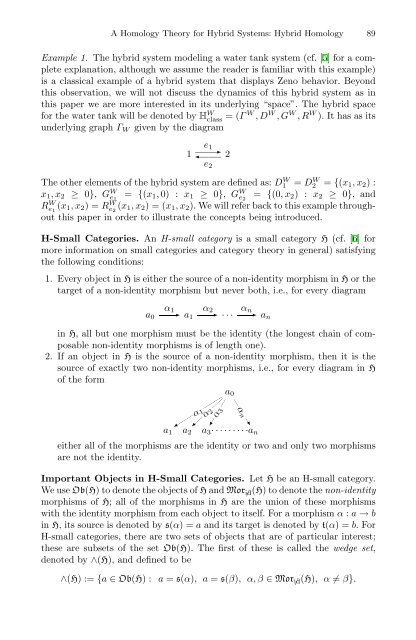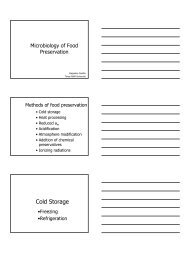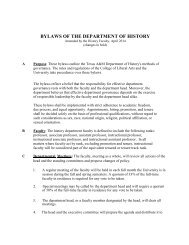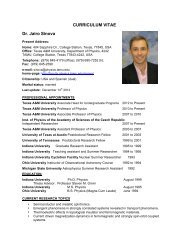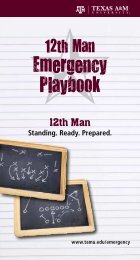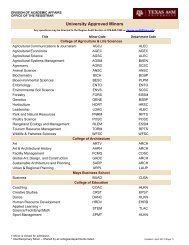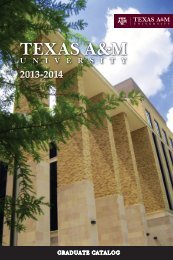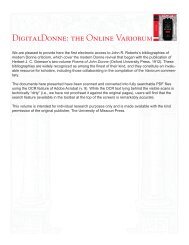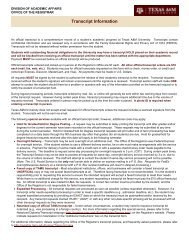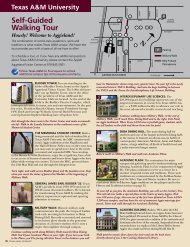A Homology Theory for Hybrid Systems: Hybrid Homology - CiteSeerX
A Homology Theory for Hybrid Systems: Hybrid Homology - CiteSeerX
A Homology Theory for Hybrid Systems: Hybrid Homology - CiteSeerX
Create successful ePaper yourself
Turn your PDF publications into a flip-book with our unique Google optimized e-Paper software.
A <strong>Homology</strong> <strong>Theory</strong> <strong>for</strong> <strong>Hybrid</strong> <strong>Systems</strong>: <strong>Hybrid</strong> <strong>Homology</strong> 89Example 1. The hybrid system modeling a water tank system (cf. [5] <strong>for</strong> a completeexplanation, although we assume the reader is familiar with this example)is a classical example of a hybrid system that displays Zeno behavior. Beyondthis observation, we will not discuss the dynamics of this hybrid system as inthis paper we are more interested in its underlying “space”. The hybrid space<strong>for</strong> the water tank will be denoted by H W class =(Γ W ,D W ,G W ,R W ). It has as itsunderlying graph Γ W given by the diagram1e 1✲✛e22The other elements of the hybrid system are defined as: D W 1 = D W 2 = {(x 1 ,x 2 ):x 1 ,x 2 ≥ 0}, G W e 1= {(x 1 , 0) : x 1 ≥ 0}, G W e 2= {(0,x 2 ) : x 2 ≥ 0}, andR W e 1(x 1 ,x 2 )=R W e 2(x 1 ,x 2 )=(x 1 ,x 2 ). We will refer back to this example throughoutthis paper in order to illustrate the concepts being introduced.H-Small Categories. An H-small category is a small category H (cf. [6] <strong>for</strong>more in<strong>for</strong>mation on small categories and category theory in general) satisfyingthe following conditions:1. Every object in H is either the source of a non-identity morphism in H or thetarget of a non-identity morphism but never both, i.e., <strong>for</strong> every diagrama 0α 1✲ a1α 2✲ ···α n✲ anin H, all but one morphism must be the identity (the longest chain of composablenon-identity morphisms is of length one).2. If an object in H is the source of a non-identity morphism, then it is thesource of exactly two non-identity morphisms, i.e., <strong>for</strong> every diagram in Hof the <strong>for</strong>ma 1✛ α1a 2✛ α2a 3either all of the morphisms are the identity or two and only two morphismsare not the identity.Important Objects in H-Small Categories. Let H be an H-small category.We use Ob(H) to denote the objects of H and Mor id/ (H) to denote the non-identitymorphisms of H; all of the morphisms in H are the union of these morphismswith the identity morphism from each object to itself. For a morphism α : a → bin H, its source is denoted by s(α) =a and its target is denoted by t(α) =b. ForH-small categories, there are two sets of objects that are of particular interest;these are subsets of the set Ob(H). The first of these is called the wedge set,denoted by ∧(H), and defined to be∧(H) :={a ∈ Ob(H) : a = s(α), a = s(β), α,β ∈ Mor id/ (H), α ≠ β}.✛ α3a 0αn ✲· · · · · · · · ·a n


